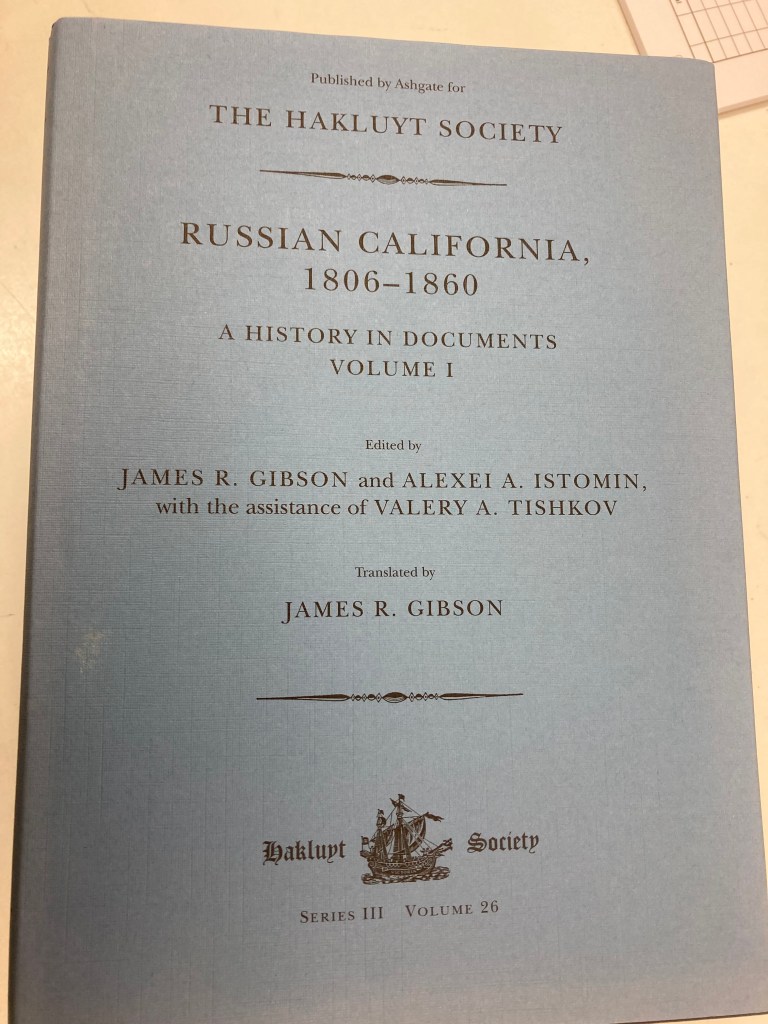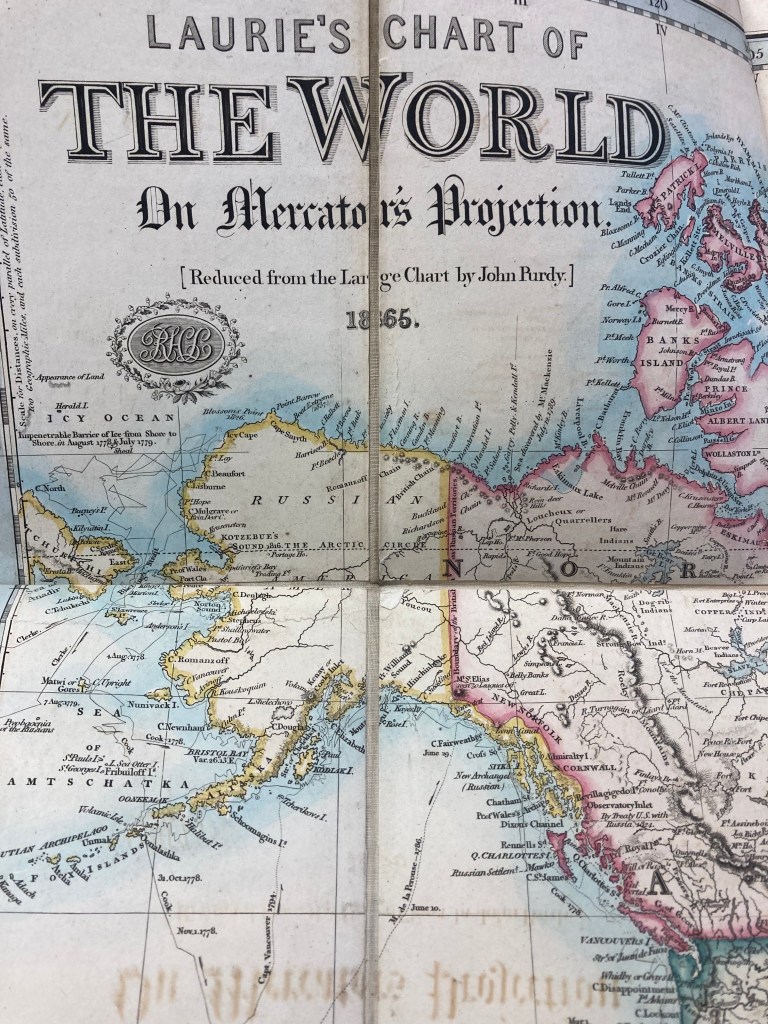As I have mentioned before, ad nauseam you might think, coincidence is a major part of the enjoyment of working in an Oxfam bookshop.
These are rather esoteric coincidences, but that’s what you get sometimes so buckle up.
Someone rang to ask if we wanted some volumes published by the Haklyut Society and I said yes.
I had seen a few before and know them to be nothing-if-not-niche history books. And worth putting online.
They came in in pristine condition and the donor admitted he had not read all of them from cover to cover.
Now, given that among the donation were three volumes of The Artic Whaling Journals of William Scoresby the Younger – I am not entirely surprised.
( Though I was surprised to note this must have been where Phillip Pullman got his name for the artic explorer Scoresby in his Northern Lights Trilogy.
Are you keeping up?)
Now, if you were thinking, ‘Well, they’ll be sat on the shelves for a while.’ You are wrong, they had sold before I got back to the shop to take a photo for this blog and to prove I was telling the truth about them.
Anyway, there were also two volumes of Russian California.
So,
‘Sailors from the Russian Empire explored along the northern coast of California. In 1812, the Russian-American Company established a trading post and small fortification at Fort Ross on the North Coast.Fort Ross was primarily used to supply Russia’s Alaskan colonies with food supplies. The settlement did not meet much success, failing to attract settlers or establish long term trade viability, and was abandoned by 1841.’
I am not sure how you would get two volumes out of that but as the Haklyut Society publishes ‘scholarly editions of primary records of voyages and travels’ maybe there were more bored settling Russian sailors writing diaries than one might expect.
And they seem to be convinced that the Russians came earlier and left later than Wikipedia thought.
So, I can hear you asking, who was this Haklyut who inspired this society of arcane travel history books publishing society?
Well, first of all his name is pronounced Hak’loowt which I found good to know as I had been struggling with various alternatives.
No, not Dutch as you might think.
Born and bred in Herefordshire – that was a surprise (and indeed the area I grew up in, by coincidence.)
Their family taking their name from the ‘Forest of Cluid in Radnorland’ apparently.
Richard’s father was a dealer in furs and was a member of the Worshipful Company of (aptly-named) Skinners.
Richard had a good education, got ordained, was around in Elizabeth and James I’s court and the was a significant promoter of the colonisation of America and was the chief promoter of a petition for ‘letters patent’ to colonise Virginina.
So, now you are feeling a lot more educated on Haklyut than you were an hour ago. No, it is fine, don’t thank me.
Anyway, on the same day that the Haklyut books came in, our champion donations-sorter came upstairs with a map.
And there it is showing Alaska ‘owned’ by the Russians.
The map was printed in 1865, just two years before the Americans bought it for $7.2m dollars. See below.
Now I disappeared down a rabbit hole of the history of Russians in Alaska and below is a short summary of what I found out – but feel free to think that you might not need to have even a very short version of this corner of history.
By the time the sale treaty was signed, Russians had been in Alaska for 125 years.
In 1741, Vitus Bering (he of the straits fame) was spurred on/ordered by Peter The Great to find out what happened after the end of Siberia.
One voyage failed but on the second one they found the edge of Alaska. Bering died of scurvy but his ship mates returned loaded up with skins of sea otters, foxes and seals – and whetted the fur-appetite of Russian dealers.
So, the Russians headed back to Alaska asap.
Alaska wasn’t empty of people. There were an estimated 100,000 native people living there.
There were some trading arrangements set up but relations were not great once the Russians started taking leaders’ children as hostages and using their more powerful weaponry, for example.
On the Aleutian Islands, again for example, a pre-Russian population of about 17,000 plummeted to 1,500 as a result of disease, capture or fighting.
And they brought over Russian Orthodox missionaries to do what missionaries tend to do. And, the most visible trace of the Russian colonial period in contemporary Alaska is the nearly 90 Russian Orthodox parishes with a membership of over 20,000 men, women, and children, almost exclusively indigenous people.
In search of somewhere just a little bit more clement and less demanding that you were a very rugged man, the Russians headed south and set up a trading relationship with the Spanish and Fort Ross in 1812 – just 90 miles north of San Francisco Bay.
But they were half a globe away from St Petersburg, it was tough, cold and
‘By the middle of the 19th century, profits from Russia’s North American colonies were in steep decline. Competition with the British Hudson’s Bay Company had brought the sea otter to near extinction, while the population of bears, wolves, and foxes on land was also nearing depletion. Faced with the reality of periodic Native American revolts, the political ramifications of the Crimean War, and unable to fully colonise the Americas to their satisfaction, the Russians concluded that their North American colonies were too expensive to retain. Eager to release themselves of the burden, the Russians sold Fort Ross in 1842, and in 1867, after less than a month of negotiations, the United States accepted Emperor Alexander II‘s offer to sell Alaska. The purchase of Alaska for $7.2 million ended Imperial Russia’s colonial presence in the Americas.’ Wikipedia
So the wildlife and local people were killed off. And, of course, that is not just the prerogative of Russians. See also America, the British Empire and many, many others.
And one man’s ‘revolt’ is another person’s definition of fighting to reclaim their own land, customs, rights.




